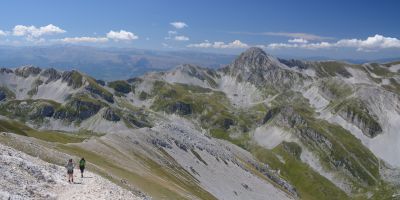Live fast and diversify!
Short generation times have been crucial for creating the high species richness of hyperdiverse groups of Amazonian trees, according to new research published in the journal Ecology Letters.
Amazonian forests are well known for their high levels of biodiversity, but until now there has been no explanation for why some groups of trees contain hundreds of species, while other groups contain only a few. By combining long-term data on the life histories and characteristics of different species, and the age and species richness of different groups, this study shows that the most diverse groups share one thing in common: short generation times.
“In the past, debates about the origin of the diversity of Amazonian forests have focussed on the role of historical events, such as the uplift of the Andes or climatic change, for generating the high diversity of Amazonian forests. In contrast, this study shows that the characteristics of the species themselves are also important” explained Dr Tim Baker. “Short generation times might increase the number of species we see today either through promoting speciation by allowing more rapid adaptation to changing environmental conditions, or from reducing extinction by allowing species to migrate more rapidly when the climate alters.’
Tim Baker worked with collaborators at the Royal Botanic Garden Edinburgh, University of Leeds, and Universidad Nacional Autónoma de México as well as many scientists involved in the RAINFOR forest inventory network, to collate the diverse types of data used in this study.
The results are also important for understanding why some forests contain more species than others. “Within Amazonia, forests in the western portion of the basin are particularly rich in species, partly because they contain many species from hyperdiverse groups such as Inga and Guatteria that contain around 300 and 265 species respectively” explained Prof. Toby Pennington, a co-author of the study. “These groups are common here because the comparatively rich, young soils of these forests favour fast-growing, short-lived species. Over longer timescales, these characteristics also seem to have generated more species – these forests are cradles of diversification.”
The work also has applied relevance: increasingly conservationists are interested not only in prioritising the preservation of species, but also examples of the underlying evolutionary processes that they represent. Understanding which forests and species demonstrate examples of those processes is essential for supporting this work.
Funding for the project came from many partners including the UK Natural Environment Research Council (NERC), the EU’s FP7 programme and The Gordon and Betty Moore Foundation.
Additional information:
The research paper, Fast demographic traits promote high diversification rates of Amazonian trees, was published in the journal Ecology Letters on 4 March 2014.
To interview Dr Tim Baker, please contact Tim Baker, School of Geography, University of Leeds on 07868 586307 or email t.r.baker(at)leeds.ac.uk




